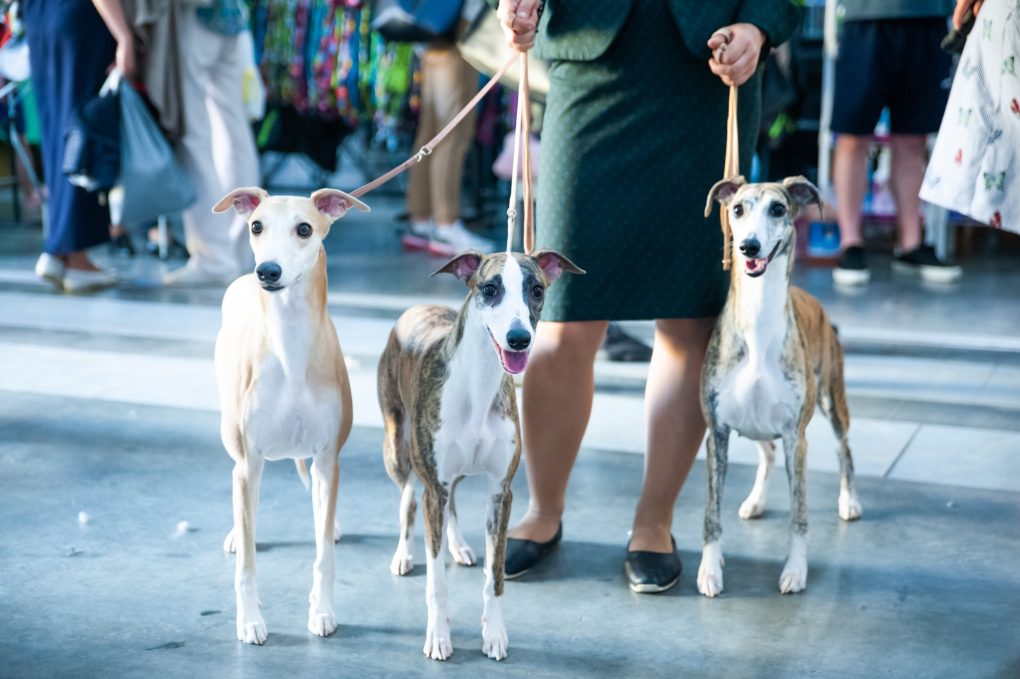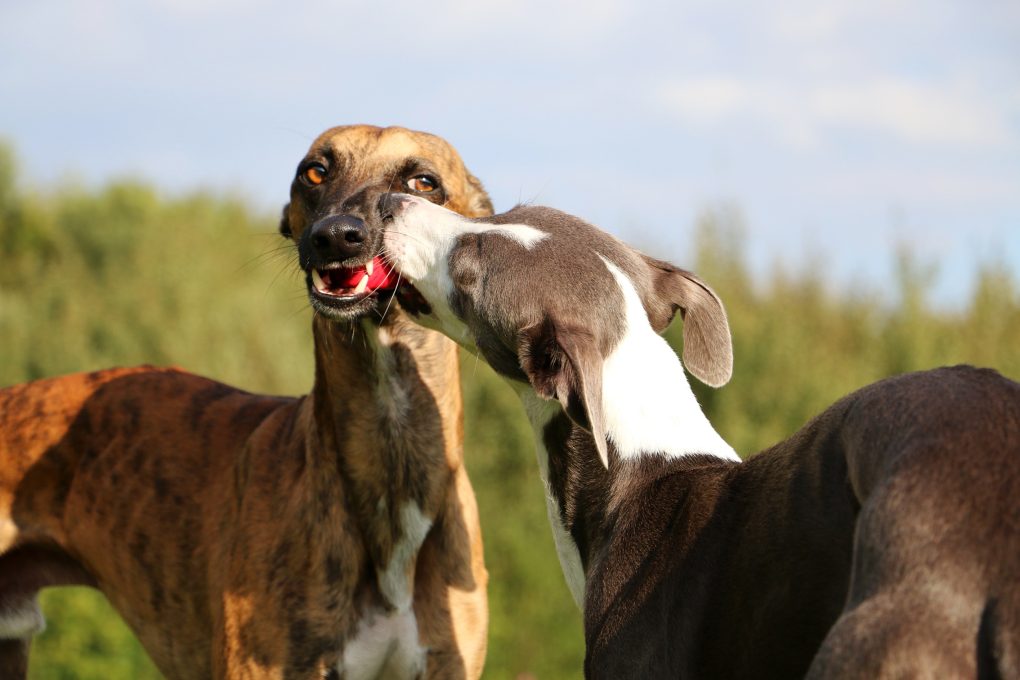Are Whippets Better in Pairs: The Benefits of Having This Breed in Pairs and How to Introduce Two Whippets to Each Other
Yes, Whippets are better in pairs. However, it depends on various factors, including the individual temperament and needs of each dog, as well as the owner’s lifestyle and preferences. For example, some Whippets may thrive in a multi-dog household, as they are social animals and enjoy the company of other dogs.


Having another Whippet or dog companion can provide mental and physical stimulation, reduce anxiety, and prevent boredom. Still, it’s important to carefully consider each dog’s temperament and energy level before introducing them to one another. Additionally, some Whippets may be dominant or territorial, leading to conflict with other dogs.
Table of Contents
The Benefits of Having Whippets in Pairs
There are several benefits of having two Whippets at home:
- Companionship: Whippets are social animals and enjoy the company of other dogs. Having two Whippets can provide each other with a constant companion and reduce the likelihood of separation anxiety or loneliness.
- Exercise: Whippets are active and require daily exercise to stay healthy and happy. Two Whippets can allow them to exercise together and burn off their excess energy.
- Mental Stimulation: Having two Whippets at home can mentally stimulate each other. They can engage in play and training sessions, which can help to improve their cognitive function and reduce boredom.
- Reduced Destructive Behavior: When left alone, some Whippets may engage in destructive behavior, such as chewing or digging. Having a companion can help to reduce this behavior as they can keep each other entertained.
- Training: Having two Whippets at home can provide an opportunity for training sessions. They can learn from each other and reinforce positive behaviors through play and socialization.
How to Introduce Whippets to Each Other
Start on Neutral Ground
Neutral grounds for introducing Whippets are locations or environments where neither dog has established territory or dominance. These areas are unfamiliar to both dogs, and both dogs have a significant advantage over the other. Neutral grounds can include public parks, open fields, or other areas not frequently visited by either dog.
The importance of neutral grounds when introducing Whippets is that it can help to reduce the likelihood of territorial behavior and aggression. For example, when a dog feels in its territory or home turf, it may be more likely to exhibit protective or aggressive behavior towards a new dog.
By starting on neutral grounds, both Whippets can approach each other in a more relaxed and neutral state, which can help to promote a positive relationship. For example, it’s important to remember that some Whippets may still exhibit aggressive or fearful behavior towards a new dog, even on neutral grounds.
Monitoring their behavior closely and intervening to prevent physical harm is important. Gradual introductions, positive reinforcement, and a controlled environment create a safe and positive introduction process for both Whippets.
Keep Both Dogs on a Leash


Keeping both Whippets on a leash helps ensure their safety during the introduction. If one or both dogs become aggressive, the leash allows their owners to quickly and safely separate them.
The leash also gives the owners control over the Whippets during the introduction. It allows them to guide the dogs toward each other or keep them apart if necessary. It further helps establish boundaries for the dogs during the introduction. Finally, it ensures they do not get too close or become too rough with each other.
Being on a leash can provide some dogs security and comfort during a new experience. It can help them feel more relaxed and calm. In addition, some local laws require dogs to be on a leash in public areas, and it is always a good practice to follow leash laws in your area.
Watch for Body Language
When introducing two Whippets to each other, it’s important to watch their body language carefully to ensure they are comfortable and not exhibiting any signs of aggression. A relaxed and comfortable Whippet will have their ears in a natural position, while an agitated or aggressive Whippet may have their ears flattened against its head or pulled back.
A wagging tail can signify excitement or happiness, but a stiff, raised tail can indicate aggression or anxiety. Also, a relaxed and comfortable Whippet will have soft, relaxed eyes, while an anxious or aggressive Whippet may have wide, staring eyes or dilated pupils.
Standing tall with a relaxed body posture shows that a Whippet is confident, while an anxious or aggressive Whippet may have a lowered head, tense muscles, or a crouched stance. Whippets growling, barking, or showing their teeth may also exhibit signs of aggression or anxiety.
Allow Sniffing
Allowing sniffing when introducing two Whippets is important because it is a natural way for dogs to get to know each other and establish familiarity. Dogs rely heavily on their sense of smell to gather information about their environment, other animals, and even people. Sniffing each other is a natural part of the greeting process for dogs, and it helps them to exchange information about each other.
When introducing two Whippets to each other, allowing them to sniff each other can help to reduce tension and establish a more relaxed and comfortable atmosphere. It allows them to get to know each other without engaging in more aggressive or intimidating behaviors. Not allowing them to sniff each other may cause frustration or confusion, leading to more aggressive behavior.
It’s important to remember that while sniffing is natural, some Whippets may be more sensitive or anxious and may not want to be sniffed by a stranger immediately. For example, suppose you notice that one of the Whippets seems uncomfortable or avoids sniffing. In that case, it’s important to respect their boundaries and try again at a later time or with the help of a professional trainer.


Positive Reinforcement
Positive reinforcement is important when introducing Whippets to each other because it helps to create a positive association between the dogs and the introduction process. Positive reinforcement is a training technique that rewards desired behaviors to increase the likelihood of those behaviors being repeated.
When introducing Whippets to each other, positive reinforcement can reward behaviors that indicate comfort, relaxation, and friendliness, such as sniffing, play bowing, and wagging their tails. Positive reinforcement can help create a safe and positive environment for the Whippets to get to know each other and help reduce anxiety and fear.
It’s important to remember that positive reinforcement should be used consistently and appropriately. Rewards should be given immediately after the desired behavior occurs and should be something that the Whippets find motivating, such as treats or praise. Punishment or negative reinforcement should never be used when introducing Whippets to each other, as it can create fear and anxiety and may lead to aggression.
